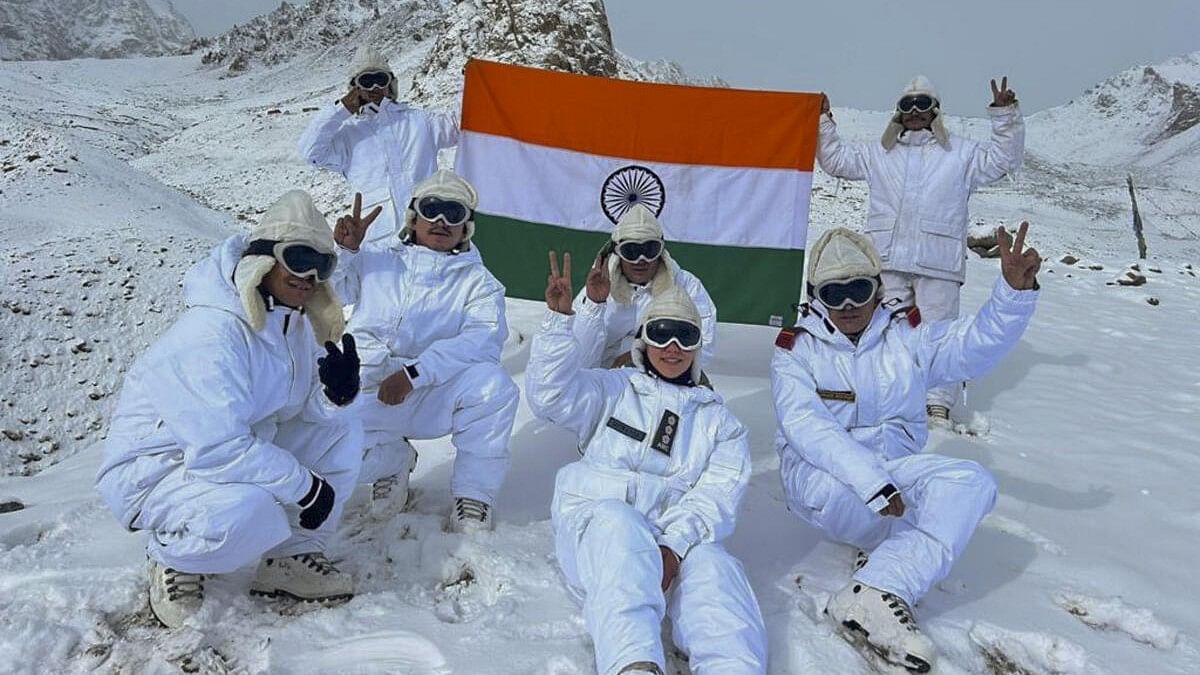
Soldiers of the Indian Army in Siachen.
Credit: PTI File Photo
New Delhi: With four decades of presence at the world’s highest battlefield, the Indian Army officials on Saturday said they aim not only to keep the dominating heights occupied to thwart the enemy, but also improve the infrastructure for troops and clean up the Siachen glacier by removing hundreds of tonnes of wastes and recycle some of them.
As a part of the process, the army has tied up with a private firm that carries the waste plastic to Tamil Nadu where the matter is recycled to prepare jackets. Such a situation was, however, unthinkable on April 13, 1984 when Capt Sanjay Kulkarni and his buddy were heli dropped at Bilafond La among icy wilderness, commencing Operation Meghdoot.
While hundreds of men have perished at the unforgiving 78 km long glacier, battling harsh climate and treacherous geography, there have been steady improvements, accelerated in the last five years, to enhance the quality of infrastructure and habitat.
The soldiers deployed in the forward posts of northern and central glaciers can now have fresh ration rather than tinned items following the induction of heavy lift choppers and logistics drones.
“Technological advancements and logistical improvements have transformed the glacier from one of the most formidable terrains into a symbol of innovation,” said an officer.
The troops from India and Pakistan have been engaged in a face-off in Siachen for 40 years with India occupying the dominating heights and negating Islamabad’s secret plans of annexing the glacier. A ceasefire has been in place since 2003.
India maintains more than 3,000 troops on the glacier where Indian posts have been built at altitudes up to 23,000 feet. The IAF helicopters form the lifeline and the sole link of Indian troops with the outside world.
They can also be in touch with their families using mobile and data connectivity, thanks to VSAT technology. The same communication technology also provides better situational awareness and telemedicine support in the time of a medical emergency.
On the ecological front, an officer said an agreement was signed between the Indian Army and a private firm to transport plastic waste all the way from the northernmost point of Siachen glacier to Tamil Nadu, where it is recycled to prepare jackets.
Use of solar power plants, wind, and fuel cell-based generators have reduced the troops’ carbon footprint significantly. The return flight of helicopters are used to backload the waste for proper disposal as per environmental norms.
The availability of special clothing, mountaineering equipment, and advanced rations has enhanced the ability of soldiers to withstand the conditions at the world's coldest battlefield with temperature dropping to minus 50 degrees Celsius even as gadgets like pocket weather trackers with each soldier provides timely updates on weather and warn them about possible avalanches.
The Siachen saga began in the mid-1970s when the Indian Army’s most famous military mountaineer Col Narendra “Bull” Kumar came across a map during a rafting expedition in the Indus river. The map showed “cartographic aggression” by Pakistan claiming the glacier within its boundary.
Following this the army and intelligence officials swung into action and asked Kumar to carry out subsequent expeditions. Op Meghdoot was launched when inputs came about Pakistan making bulk purchases of high-altitude clothing from foreign markets, indicating a possible invasion.
By the time, the Pakistan Army came about 300-odd Indian troops were positioned on the strategically important peaks and passes of the glacier, gaining a tactical advantage.
